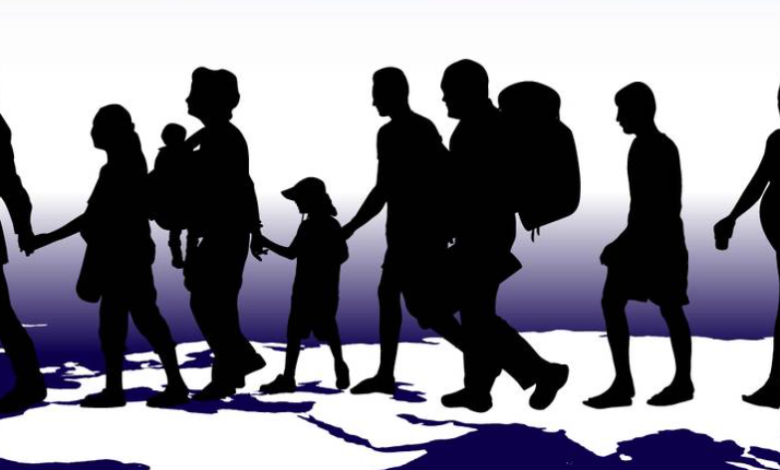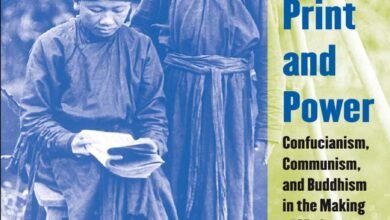
How is Migration a Determinant Factor of Population Change? Unraveling the Connection
Migration significantly impacts population change as individuals move to seek better opportunities or escape challenges. This movement results in shifts in the demographic composition of regions, driving population growth or decline.
Factors influencing migration patterns include economic conditions, political instability, and environmental changes, shaping the population dynamics of a given area. Understanding the intricate relationship between migration and population change is crucial for policy-making, urban planning, and resource allocation. By analyzing these trends, societies can better prepare for the social, economic, and cultural transformations that accompany migration-driven population changes.
This connection underscores the importance of studying migration as a determinant factor of population dynamics.

Credit: journals.physiology.org
Contents
The Impact Of Migration On Population Change
Migration significantly influences the dynamics of population change worldwide. Let’s explore the various dimensions of this impact.
Historical Patterns Of Migration
Migrations have shaped populations for centuries, driving growth and shifts in demographics. Movements of people have played a crucial role in determining population distributions.
Internal Vs. International Migration
Internal migration refers to movements within a country, while international migration involves crossing national borders. Both types contribute to population changes, affecting countries differently.
In summary, migration acts as a fundamental driver of population change, impacting demographics on both local and global scales.
Factors Driving Migration
Factors driving migration play a crucial role in determining population change. Migration is influenced by various push and pull factors that prompt individuals to relocate from one place to another.
Economic Opportunities
In search of job prospects and financial stability, people often migrate to regions offering better employment opportunities.
Political And Environmental Factors
Political unrest and environmental disasters can force individuals to move in search of safety and security.
Consequences Of Migration On Population
Migration plays a crucial role in shaping population dynamics. It directly influences population change by affecting the size and composition of communities. Migration patterns can lead to shifts in demographics, impacting factors such as age structure, workforce participation, and cultural diversity within a population.
Demographic Shifts
Migration is a significant determinant of population change, contributing to various consequences that affect both the departing and receiving areas. One major consequence of migration on population is the resultant demographic shifts. These shifts occur when people move from one location to another, leading to changes in the composition of the population in both the origin and destination areas. These changes can include alterations in age structure, sex ratios, and the overall size of the population.
Cultural And Social Impacts
In addition to demographic shifts, migration has significant cultural and social impacts on the population. This can be seen in the introduction of new cultural practices, languages, and traditions to the receiving communities. Simultaneously, the departing areas may experience the loss of cultural diversity and traditions. Furthermore, the social dynamics within the communities are influenced as new migrants integrate and interact with existing populations, leading to changes in social norms and values.
Migration, as a determinant factor of population change, thus has tangible consequences on demographic composition, cultural diversity, and social dynamics, shaping the populations of origin and destination areas in distinct ways.
Challenges And Opportunities
Migration acts as a crucial factor shaping population trends, bringing about both challenges and opportunities for societies worldwide. It influences demographic shifts, economic development, and cultural diversity, presenting a complex interplay between social structures and individual mobility. Understanding the impact of migration on population change is essential for policy-making and fostering inclusive communities.
Integration And Assimilation
Integration and assimilation are crucial factors in addressing the challenges and opportunities associated with migration and population change. When migrants move to a new country or region, integrating into the local society becomes a significant hurdle they must overcome. However, successful integration can yield a host of benefits for both the migrants and the receiving community.
Integration involves the social and cultural adaptation of migrants, allowing them to become active participants in their new society. This process includes language acquisition, familiarizing oneself with local customs and traditions, and developing social networks within the community. Assimilation, on the other hand, entails the merging of migrants’ identities and values with those of the majority population.
The challenges of integration and assimilation can stem from factors such as language barriers, cultural differences, and discrimination. To address these challenges, governments and local communities must implement inclusive policies and programs that promote diversity, tolerance, and equal opportunities. Providing language classes and cultural orientation programs can facilitate the integration process for migrants. Emphasizing the value of diversity and promoting anti-discrimination initiatives further nurtures an inclusive environment.
Labor Market Dynamics
Labor market dynamics play a significant role in both the challenges and opportunities associated with migration. Migrants often seek better employment opportunities in their destination countries, contributing to population change. Their presence in a new labor market introduces various dynamics that impact both migrants and the local workforce.
For migrants, finding employment is a primary concern. Language barriers, differences in qualification recognition, and limited social networks may pose challenges in accessing suitable job opportunities. Governments and employers can help address these challenges by providing language support, skill assessment programs, and networking opportunities.
However, labor migration can also create opportunities in the receiving country’s labor market. Migrants bring diverse skills, experiences, and perspectives that can enhance a country’s workforce and contribute to economic growth. They often fill labor market gaps, particularly in sectors experiencing shortages of skilled workers. Moreover, their entrepreneurial spirit can lead to the creation of new businesses, generating employment opportunities for both migrants and the local population.
Policy Implications And Future Trends
Migration plays a crucial role in shaping population dynamics, influencing societal trends and policy decisions. As a determinant factor of population change, migration patterns can greatly impact economic development, cultural diversity, and resource allocation in receiving regions. Anticipating and adapting to these trends is essential for policymakers to address the associated challenges and opportunities in the future.
Migration Policies
Migration policies play a crucial role in determining the population changes of a country. These policies are designed by governments to regulate the flow of people across borders, either encouraging or restricting migration. The effectiveness of these policies can significantly impact population change and have far-reaching consequences for society and the economy.
Forecasting Population Changes
Accurately forecasting population changes is essential for policymakers to make informed decisions and plan for the future. Migration plays a significant role in population growth or decline, and understanding its patterns and trends is crucial.
By analyzing historical migration data and considering various factors such as economic conditions, social factors, and geopolitical events, experts can develop models to predict population changes. Migration as a determinant factor of population change has several policy implications and future trends. Governments need to consider these implications when formulating migration policies to ensure sustainable development and social cohesion. Some of the key policy implications include:
- Integration Policies: Policymakers need to develop comprehensive integration policies to facilitate the smooth integration of migrants into society. These policies should prioritize access to education, healthcare, and employment opportunities to foster social cohesion and reduce inequality.
- Economic Impact: Migration policies must consider the economic impact of migration. While migration can contribute to economic growth through increased labor force and diverse skill sets, policymakers need to ensure that this economic benefit is distributed equitably and does not lead to the exploitation of migrants.
- Demographic Challenges: Migration can bring about significant demographic changes, including an aging population or a youthful workforce. Governments must anticipate these challenges and develop policies that address the needs of different age groups while maintaining societal balance.
- Multi-Level Governance: Addressing the complexities of migration requires multi-level governance, involving local, national, and international stakeholders. Cooperation and coordination among different levels of government and international organizations are crucial for effective migration policies.
- Environmental Considerations: Future trends indicate that migration may be prompted by environmental factors, such as climate change. Policymakers need to consider these environmental challenges and incorporate them into migration policies to create resilient communities and mitigate environmental risks.
By acknowledging these policy implications and keeping up with future trends, governments can develop migration policies that promote sustainable development, address societal challenges, and ensure the well-being of both migrants and the host population.

Credit: fastercapital.com
Frequently Asked Questions For How Is Migration A Determinant Factor Of Population Change
How Does Migration Affect Population Change?
Migration is a significant determinant of population change as it involves the movement of people from one place to another. When individuals move to a particular area, it increases the population there. On the other hand, when people leave an area, it decreases the population, affecting the overall demographic composition.
What Are The Reasons Behind Migration?
People migrate for various reasons, including economic opportunities, seeking a better quality of life, escaping conflict or persecution, or joining family members. Factors such as job availability, education, security, and political stability influence migration decisions, leading to population changes in both origin and destination areas.
How Does Migration Impact The Local Economy?
Migration has a profound impact on the local economy. When migrants move to an area, they can contribute to economic growth through their labor force participation, entrepreneurial activities, and consumer spending. Additionally, migrants often fill labor market gaps, both by performing jobs that local populations may not want or by bringing in specialized skills and knowledge.
What Role Does Migration Play In Urbanization?
Migration plays a crucial role in urbanization. As individuals move from rural to urban areas in search of better opportunities, it leads to the growth of cities and towns. This influx of migrants contributes to urban development, infrastructure expansion, and the diversity of the urban population.
Conclusion
Migration plays a crucial role in shaping population dynamics. As people move in search of better opportunities and improved living conditions, they contribute to the growth, decline, or redistribution of populations in various regions. Understanding these migration patterns is vital for policymakers to make informed decisions for the future.



